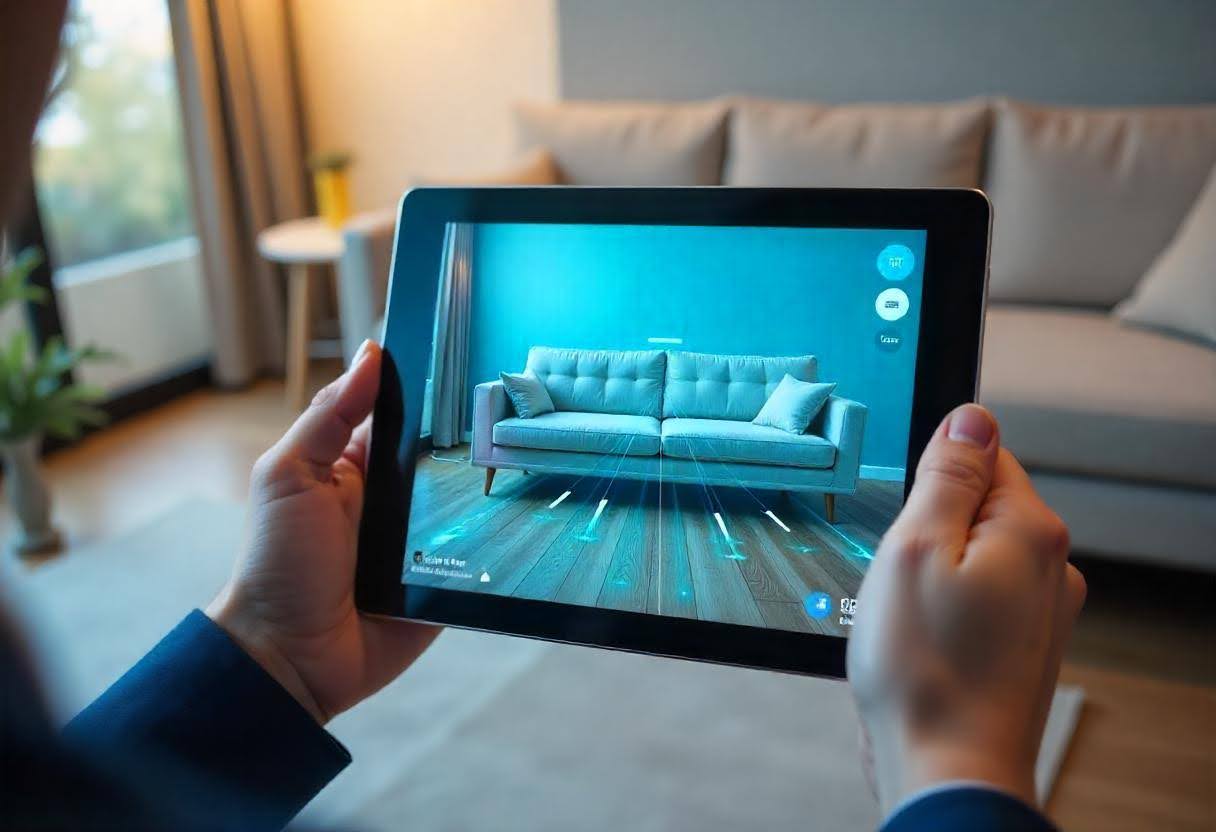In a world where the digital and physical continue to merge, augmented reality for retail has emerged as one of the most compelling innovations redefining how we shop. Once the domain of sci-fi movies and experimental tech labs, AR is now front and center in transforming retail experiences, from virtual try-ons to interactive in-store navigation. It’s not just a novelty—it’s a strategic necessity for brands seeking to stay relevant in the modern consumer landscape.

What is Augmented Reality for Retail?
At its core, augmented reality (AR) overlays digital information—images, text, or animations—onto the real world, typically through smartphones, tablets, or AR glasses. In retail, this means customers can visualize how a product looks or functions in their own environment before making a purchase. For instance, furniture retailer IKEA’s AR app allows shoppers to place life-sized 3D models of furniture in their living room using just their phone camera. Fashion brands like Warby Parker and Gucci offer virtual try-ons that help users see how glasses or sneakers would look on them without visiting a physical store.
This shift from passive browsing to interactive engagement is creating a more immersive, informative, and personalized shopping experience.
Why Retailers Are Investing in AR
Consumer expectations are evolving rapidly. Today’s shoppers want convenience, instant information, and tailored experiences. AR offers all three.
- Enhanced Decision-Making: When a customer can see how a sofa fits in their living room or how a shade of lipstick looks on their skin tone, they’re more likely to make informed, confident purchasing decisions—reducing returns and increasing satisfaction.
- Increased Engagement: AR experiences are inherently interactive, which increases the time customers spend engaging with products. Brands like Sephora have reported increased app engagement and higher conversion rates through their AR tools.
- Competitive Advantage: As AR becomes more accessible, early adopters are gaining a substantial edge. They stand out in crowded markets and build stronger emotional connections with consumers through innovative, memorable experiences.
Use Cases Across Retail Sectors
- Fashion: AR mirrors in stores and mobile apps let customers try on clothes and accessories without physically putting them on. This is especially helpful during peak seasons or in small fitting areas.
- Home Goods: As seen with IKEA and Wayfair, AR lets users place digital versions of furniture in their homes to check fit, color coordination, and scale. This form of product visualization allows customers to see exactly how items will look in their space—turning uncertainty into confidence.
- Beauty: Brands like L’Oréal and Estée Lauder use AR for virtual makeup try-ons, allowing users to test products in real-time through their phones.
- Footwear: Nike’s AR features can measure customers’ feet with precision and recommend the best-fitting shoe size, streamlining the online shopping experience.
- In-Store Navigation: Large department stores and supermarkets use AR to help shoppers find items with indoor maps and visual cues through their phone screens.
Challenges and the Path Forward
Despite its potential, augmented reality for retail still faces hurdles. The cost of development, technical integration with existing platforms, and ensuring a seamless user experience can be challenging—especially for small to medium-sized businesses. Moreover, while smartphone-based AR is widely accessible, more advanced versions using smart glasses or headsets are still in their infancy and not yet mainstream.
However, the rapid pace of technology adoption is narrowing these gaps. Tools like Apple’s ARKit and Google’s ARCore have democratized AR development, making it easier for companies to build customized experiences without massive budgets. Meanwhile, 5G connectivity promises to make AR applications faster and more responsive, enhancing real-time interactivity.
The Future of Retail is Phygital
As we look ahead, the line between physical and digital retail—what experts call “phygital”—will continue to blur. Brick-and-mortar stores won’t disappear, but they will evolve. Augmented reality for retail will become a staple in retail strategy, complementing traditional formats and unlocking new modes of consumer engagement. From holographic product displays to guided virtual shopping tours, the possibilities are vast and growing.
Retailers who embrace AR today are not just keeping up with a trend—they’re future-proofing their businesses. By turning ordinary shopping into an extraordinary experience, augmented reality is no longer just a feature; it’s becoming a foundation for how consumers interact with brands in a digitally enhanced world.

Founder Dinis Guarda
IntelligentHQ Your New Business Network.
IntelligentHQ is a Business network and an expert source for finance, capital markets and intelligence for thousands of global business professionals, startups, and companies.
We exist at the point of intersection between technology, social media, finance and innovation.
IntelligentHQ leverages innovation and scale of social digital technology, analytics, news, and distribution to create an unparalleled, full digital medium and social business networks spectrum.
IntelligentHQ is working hard, to become a trusted, and indispensable source of business news and analytics, within financial services and its associated supply chains and ecosystems










